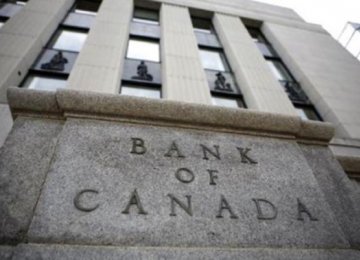Less than a year since completing the last review of its inflation-targeting mandate, the Bank of Canada is starting to prepare for the next one in 2021.
Consultations kick off in Ottawa on Sept. 14 with an invitation-only workshop of economists that will be webcast on the central bank’s website. It’s an early public start to the process, and comes amid a growing sense that a deeper look at the inflation target is needed after almost a decade of poor economic performance, Bloomberg reported.
For example, an argument could be made the bank kept monetary policy too tight. It consistently predicted much better outcomes, and set its monetary policy accordingly to keep a lid on inflation. But the inflation never materialized, and the economy continued to fall below expectations.
Since the 1990s, the bank has been narrowly focused on a single objective: to keep prices stable. Operationally, that means aiming for a 2% inflation target over its so-called forecast horizon, a period of about two years.
If it looks like inflation is heading above target, the bank would generally interpret that as a signal higher interest rates are required to cool the economy. Likewise, inflation heading below target usually signals lower rates are needed.
The whole framework assumes a predictable relationship between inflation and output.
Up until the recession, the targeting mandate was extremely successful. Total annual inflation as measured by the consumer price index averaged exactly 2% between 1995 and 2008, with the economy growing steadily at that time.
Since the financial crisis, the bank has consistently undershot its target. During Mark Carney’s tenure as governor of Bank of England, CPI averaged 1.7%. Under Stephen Poloz, who became governor of Bank of Canada in 2013, the index has averaged about 1.4% percent, the lowest among Canada’s inflation targeting central bankers.
The economy, meanwhile, has been in a near-constant state of under-performance, defying the bank’s recurring predictions that a turnaround is near. According to its estimates, Canada’s economy has had excess capacity—resources going unused—for 35 straight quarters. That’s a long time.
It’s easy to blame the poor record on the fact that some events are just unpredictable, like the plunge in oil prices that started in 2014. Some of the lapse could be attributed to forecasting errors, or changing parameters in models that may simply need tweaking.






Add new comment
Read our comment policy before posting your viewpoints